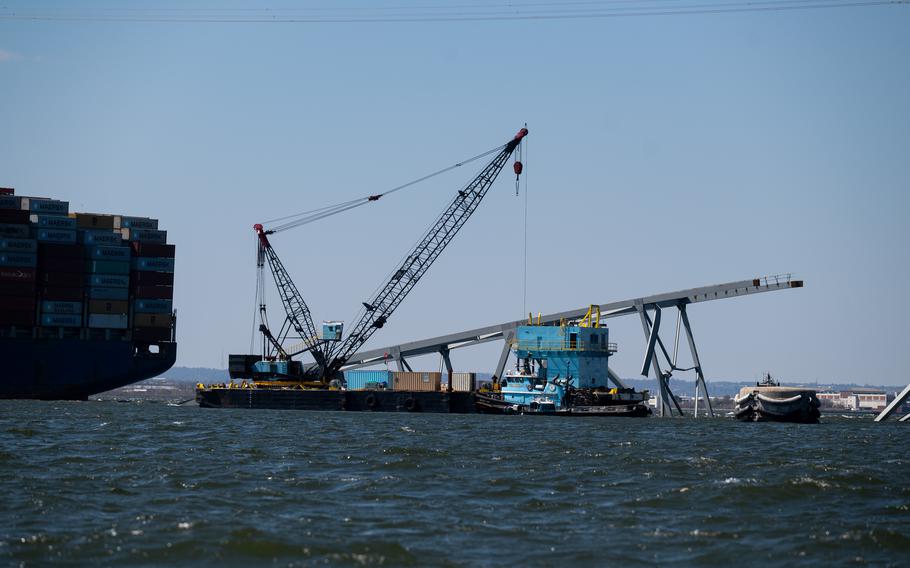
The Chesapeake, a 1000-ton lift capacity derrick barge; the Ferrell, a 200-ton lift capacity revolving crane barge; and the Oyster Bay, a 150-ton lift capacity crane barge arrive in Baltimore Harbor, Friday, March 29, 2024. The barges will be used by the Navy’s Supervisor of Salvage and Diving (SUPSALV) to remove submerged portions of the Francis Scott Key Bridge. The barges, contracted through Naval Sea Systems Command (NAVSEA) will support the U.S. Coast Guard-led Unified Command in its effort to clear and re-open the channel. (Hannah Mohr/U.S. Navy)
Three barges contracted by the Navy arrived Friday at Baltimore Harbor to assist in removing the remains of the collapsed Francis Scott Key Bridge from the Patapsco River.
The 1,000-ton lift capacity derrick barge Chesapeake, the 200-ton lift capacity revolving crane barge Ferrell and the 150-ton lift capacity crane barge Oyster Bay have been contracted through Naval Sea Systems Command (NAVSEA) and are being used to remove submerged portions of the bridge, according to a Navy news release. The bridge collapsed early Tuesday following a freighter collision.
The Navy’s Supervisor of Salvage and Diving will work in phases to disassemble and remove the bridge section by section. The pieces will be transported away by the barges, the release said.
An additional 400-ton lift capacity barge will arrive in Baltimore early this week, the release said. An additional 12 crane and support vessels, including tugs, survey, dive and crew boats, are in the mobilization process and also will arrive in Baltimore “in the coming days,” the release said.
On Saturday, crews started cutting the first section of steel from the bridge to be removed. The joint incident command, led by the U.S. Coast Guard, said in a statement that the work was being done on the top of the north side of the collapsed structure, the Associated Press reported.
Seven floating cranes — including a massive one capable of lifting 1,000 tons — 10 tugboats, nine barges, eight salvage vessels and five Coast Guard boats were on site in the water southeast of Baltimore, the AP reported.
More than 1,100 members of the U.S. Army Corps of Engineers also are assisting in clearing the Fort McHenry Channel in the Patapsco River.
The Associated Press contributed to this report.